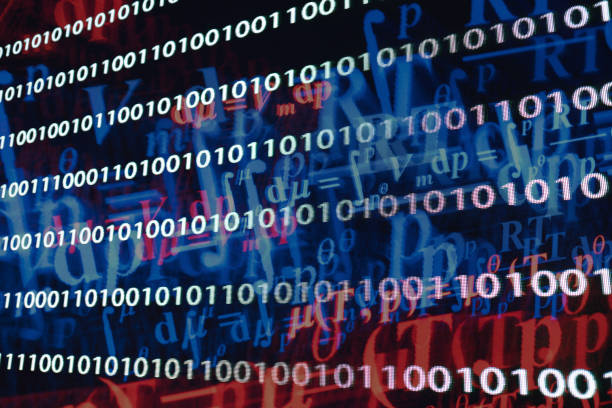If you’ve heard of Bitcoin, you’ve undoubtedly heard of Blockchain, a technology being promoted as the solution to almost every transaction problem the world is facing today.
Many individuals who are new to the technology often wonder if there is any difference between a Blockchain and a database, given how popular it has become in recent years and its numerous applications.
Many individuals dismiss a Blockchain as “simply another database,” claiming its features can be achieved using more traditional, tried-and-true technology.
According to cynics, the only difference between a Blockchain and a database is the hype surrounding the former.
As you will see momentarily, a blockchain is actually more than just a database.
This post aims to provide a detailed comparison of a Blockchain and a Database.
It’s helpful to think about what these two notions are and how they’re developed and maintained to grasp the differences between them.
What is a Blockchain?
Blockchain is a distributed ledger technology that allows a group of peers to collaborate to form a single, decentralized network.
With the help of the consensus algorithm, peers can communicate and share information or data.
Furthermore, there is no need for a single authority, making the entire network more trustworthy than other networks.
Let’s examine a real-world scenario to understand how blockchain works.
A transaction is created when one peer provides data to another.
If this occurs, the transactions must be validated using the consensus algorithm.
Proof of Work is utilised to validate the work in this situation.
It prevents any invalid transactions from being added to the blockchain.
Blocks are the foundation of blockchain technology.
They’re used to keep track of transactions and other vital data needed to keep the blockchain running smoothly.
Each transaction is given a timestamp to ensure that anyone can track, back up, and validate it.
The system, as a whole, adds value and introduces new features like transparency, immutability, and security.
Read: All You Need To Know About Cryptocurrency

What is a Database?
A database is a type of central ledger managed by an administrator who can read, write, update, and delete data.
A database is a data structure that allows organisations to store and manipulate information.
The original database architecture was built on a hierarchical structure that allowed data to be collected and stored.
Data has become more complex in recent years, and a typical database employs a client-server architecture.
Clients are users of a service that requests data access, which is routed through a server that hosts the database.
As a result, a user can add or alter data stored on the server, but only after the administrator has validated the client’s credentials and allowed access.
The secret records of a hospital, bank ledgers, and an organization’s corporate data are examples of databases under the control of a trusted central authority.
A database’s main distinguishing feature is that it is a centralized network.
Read: How Blockchain Enhances Data Security and Transparency
Blockchain vs. Database: The similarity
There are not as many similarities between blockchain and databases as there are differences.
The major similarity between the two is that they both digitally store data.
While the blockchain is decentralized and databases are not, they both fundamentally do the same thing: collect and store data.
Read: Blockchain Solutions: Revolutionizing Supply Chain Management
Blockchain vs. Database: The differences
Now that we’ve defined and described Blockchain and database, as well as their similarities, let’s look at how they differ.
The following are the primary distinctions between the two technologies.
Put Your Tech Company on the Map!
Get featured on Nicholas Idoko’s Blog for just $50. Showcase your business, boost credibility, and reach a growing audience eager for tech solutions.
Publish NowControl
Traditional databases are centralized in that they are hosted on a single server and cannot be downloaded by users.
The chosen authority retains database control, which verifies the client’s credentials before accessing the database.
As a result, the database’s operation and management are in the hands of a single person or a small group of people.
Blockchain, on the other hand, is meant to function with the input of every network user.
In other words, peers in the system can communicate information without the need for a central administrator’s monitoring or consent.
Most nodes must agree before any information can be added to a block.
This consensus ensures the network’s security and makes it tough to hack.
Permissions
Permissions are used to run databases.
The database administrator can specify which ‘users’ can communicate with the database.
Clients attempting to access the database must meet the administrator’s criteria for an ideal user.
As a result, a database is designed to limit the number of people who may access it because a user must meet certain criteria to access or add data to the database.
Because no regulations decide who the ideal user is, blockchain can simply be referred to as a permission-less network.
Anyone with a computer can access the Blockchain and read the stored data at any time.
Although there are various types of Blockchain, the rules that govern them decide who can view and update information.
In general, network participants can instantaneously access the Blockchain whenever they wish.
Security
This is a significant disadvantage of databases since their information is not secure.
Hackers may use a single gap to access critical data and destroy the enterprise’s operations illegally unless the entire structure is standardised and properly monitored.
When compared to databases, blockchain comes out on top since it is more secure.
Rather than relying on a central server, Blockchain works by distributing a copy of the chain to each node to validate blocks.
Where there is a lack of consistency from a node, the technology will detect the anomaly and repair any incorrect data automatically.
If a network peer turns rogue and decides to modify data on the network, the network will readjust itself based on the chain copy shared by all other nodes.
To tamper with a network, a rogue peer needs at least 51 percent of the nodes, which is nearly impossible due to the large computational power required.
Append-only by design
Databases are made to allow for the addition, modification, and deletion of data.
With a Blockchain, however, this is not the case.
Data can’t be changed, updated, or withdrawn from a block once added to the chain.
The data is tacked onto the entire chain so that everything recorded on the data has a historical record.
To put it another way, Blockchain just has one operation: insert.
Anything is contributed to it becomes immutable and transparent to all.

Architecture
A client/server design is used in a typical database, which has shown to be helpful for both small and large-scale businesses.
The clients in this approach act as users or consumers, while the server acts as a producer.
Clients can thus ask for and receive services from a server, which serves as a centralized processing unit.
On the other hand, blockchain uses the distributed ledger technology architecture.
This implies that it works as a peer-to-peer network, with each peer employing safe cryptographic protocols to connect with the others.
Each peer holds a copy of the original chain, acting as a network server (called nodes) that validates the transaction block.
Each node can also carry out mining operations or a combination of the two.
Put Your Tech Company on the Map!
Get featured on Nicholas Idoko’s Blog for just $50. Showcase your business, boost credibility, and reach a growing audience eager for tech solutions.
Publish NowRead: What is Crypto Mining in Blockchain?
Final Thoughts
Although blockchain can be regarded a type of database in the sense that it can store data, it is incorrect to compare it to a traditional database.
The distinctions between a Blockchain and a database are stark, and their variances allow them to serve various purposes.
Ultimately, it doesn’t matter which technology wins the Blockchain vs. Database conflict; what counts is how relevant they are to your objectives.
Every company must determine what it wants before deciding whether to use a Blockchain or a regular database.
Before You Go…
Hey, thank you for reading this blog post to the end. I hope it was helpful. Let me tell you a little bit about Nicholas Idoko Technologies.
We help businesses and companies build an online presence by developing web, mobile, desktop, and blockchain applications.
We also help aspiring software developers and programmers learn the skills they need to have a successful career.
Take your first step to becoming a programming expert by joining our Learn To Code academy today!
Be sure to contact us if you need more information or have any questions! We are readily available.
[E-Books for Sale]
1,500 AI Applications for Next-Level Growth: Unleash the Potential for Wealth and Innovation
$5.38 • 1,500 AI Applications • 228 pages
Are you ready to tap into the power of Artificial Intelligence without the tech jargon and endless guesswork? This definitive e-book unlocks 1,500 real-world AI strategies that can help you.
See All 1,500 AI Applications of this E-Book
750 Lucrative Business Ideas: Your Ultimate Guide to Thriving in the U.S. Market
$49 • 750 Business Ideas • 109 pages
Unlock 750 profitable business ideas to transform your future. Discover the ultimate guide for aspiring entrepreneurs today!
See All 750 Business Ideas of this E-Book
500 Cutting-Edge Tech Startup Ideas for 2024 & 2025: Innovate, Create, Dominate
$19.99 • 500 Tech Startup Ideas • 62 pages
You will get inspired with 500 innovative tech startup ideas for 2024 and 2025, complete with concise descriptions to help you kickstart your entrepreneurial journey in AI, Blockchain, IoT, Fintech, and AR/VR.
We Design & Develop Websites, Android & iOS Apps
Looking to transform your digital presence? We specialize in creating stunning websites and powerful mobile apps for Android and iOS. Let us bring your vision to life with innovative, tailored solutions!
Get Started Today



